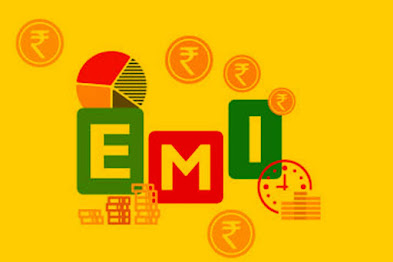EMI schemes have become extremely popular in India, especially when it comes to purchasing big-ticket items like electronics, appliances, and even cars. It is a convenient way to make purchases without having to pay a large sum upfront. One of the most talked-about EMI schemes is EMI in advance. This scheme allows you to pay the entire loan amount at the start of the loan tenure, rather than paying the amount in installments. But is it a wise financial move? Lets delve a bit deeper and find out.
EMI in advance: What is it?
EMI in advance, also known as Pre-EMI or Interest in Advance EMI, is an EMI scheme where you pay the entire interest amount upfront, at the beginning of the loan tenure. In other words, you are paying the interest for the entire loan amount before you even start paying the principal amount. Once the interest is paid, you start repaying the principal amount via monthly installments.
To put it into simpler terms, lets say you take a loan of Rs. 1 lakh for a tenure of 12 months at an interest rate of 10%. Under the EMI in advance scheme, you will pay Rs. 10,000 (interest for the entire year) upfront, and then start paying the principal amount along with the remaining interest amount every month. The result of this would be a lower monthly EMI amount.
EMI in advance has several advantages:
1. Lower EMI amount: As mentioned earlier, paying the interest upfront means you will have a lower monthly EMI amount. This can be beneficial if you have a tight financial budget.
2. Interest savings: Another advantage of the EMI in advance scheme is savings in interest. By paying the entire interest amount upfront, you will save on the interest amount charged on the principal amount. This can be a significant saving in the long run.
3. Higher loan amount: Since the EMI amount is lower, you may be eligible for a larger loan amount. This can be an advantage if you need to purchase a high-value item.
EMI in advance: Disadvantages
Despite the advantages, there are also a few disadvantages to EMI in advance:
1. High upfront cost: Paying the entire interest amount upfront can be a significant expense, especially if you are on a tight budget. This can impact your cash flows and you may have to resort to other borrowing options to meet your daily expenses.
2. Higher total cost: Although paying the interest upfront can save on the interest charged on the principal amount, in total, you may end up paying more interest overall.
3. Availability: EMI in advance is not offered by all banks or financial institutions, so you may have limited options when it comes to choosing a lender.
Croma No Cost EMI
Croma, a leading electronics retailer, offers a No Cost EMI scheme that allows you to purchase electronics without paying any interest. Unlike the EMI in advance scheme, there is no upfront payment of interest. Instead, the retailer absorbs the cost of interest, and you only pay the cost of the product in installments.
Cromas No Cost EMI scheme has several advantages:
1. Interest-free purchase: The scheme offers you the benefit of purchasing electronics without paying any interest, making it an attractive option.
2. Low or no down payment: You may not be required to pay any down payment or a minimal amount as down payment, making it affordable for all.
2. Flexibility: The scheme has a flexible tenure, allowing you to choose the repayment period based on your financial needs.
However, there are a few disadvantages to Croma No Cost EMI:
1. Limited products: The scheme is only applicable to select products and brands, limiting your options when it comes to choosing a product.
2. Processing fee: While the scheme offers interest-free purchasing, you may have to pay a processing fee, which can vary depending on the lender and the product.
3. Eligibility criteria: Like all EMI schemes, eligibility criteria like credit score and income play a significant role in determining your eligibility for the scheme.
Conclusion: Should you opt for EMI in advance or Croma No Cost EMI?
Deciding between these two schemes depends on your financial situation and preference. If you have a tight budget and need to purchase a high-value item, then EMI in advance can be a wise financial move as it allows you to pay a lower EMI amount. However, keep in mind that paying the interest upfront can be a significant expense and impact your cash flows. On the other hand, Croma No Cost EMI can be a good option if you want to purchase electronics without paying any interest. However, keep in mind that the scheme is applicable to limited products and brands, and you may have to pay a processing fee.
Before deciding on any EMI scheme, it is essential to do your research, compare options, and determine whether or not it is a wise financial move based on your financial situation. Always read the terms and conditions of the scheme before signing the agreement to avoid any hidden charges or penalties.

